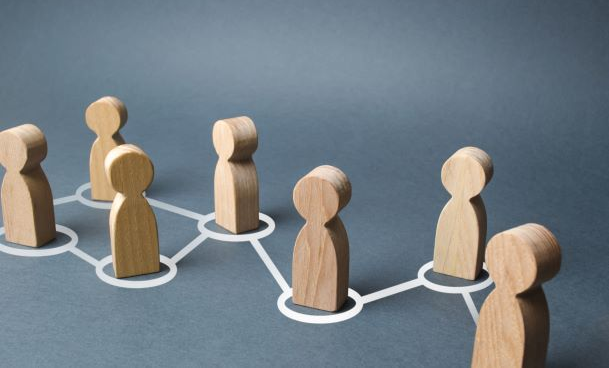Agile frameworks: teamworking in the digital era
For more than three years, most of Prosegur Cash teams have been making daily use of so-called agile frameworks (Agile), an innovative way of developing products and services working as a team, which improves productivity and the level of job satisfaction.

Divide, segment and you will conquer
From Socrates to the present day
Segmentation is one of the key concepts. When an Agile team takes on a specific task, it is seen as a problem that must be solved collectively in the best possible way. This happens, initially, "by drawing up a roadmap that converts the general problem into a series of small tasks to be completed in the very short term, following a logic of sprints or time boxes", something similar to what in cycling would be the bonus sprints.
"In agile teams, the role of the product or service owner is to define the "what" and it is the team as a whole that decides the "how". Every day, before the day starts, a follow-up meeting is held. "They are brief and very executive," says Ana. "They last around a quarter of an hour and all the attendees remain standing, so they don't get too comfortable and aren't tempted to digress." Each team member explains what specific task they are working on, what progress they have been able to achieve, and what obstacles they have encountered. Help is offered if required, and if they have successfully completed their task, it is decided which one to take on next in consultation with the other team members. "In this way, without losing sight of the general roadmap, which everyone involved knows and accepts, continuous and very rapid progress is made possible, thus avoiding the bottlenecks that are so frequent in centralised and hierarchical systems."
The team is always on the move. Everyone has something specific and useful to do. Working hypotheses are proposed and verified on the ground. If something doesn't work because it doesn't fit well into the collective task, it is rejected immediately, not after several months of fruitless efforts to pointlessly persevere. In Ana's view, "any professional can adapt to this change in mindset." It is enough to communicate a series of basic, quite intuitive ideas, and then begin to practise them and internalise them better and better on a daily basis. "Agility is a habit and a way of understanding work. It is acquired, without a doubt, but above all it is developed." Ana assumes that "often it means overcoming a mental inertia, because we all have a certain attachment to the work routines that we have acquired over the years and with which we feel comfortable." However, experience has taught her that "agile frameworks are rewarding for most of those involved, because they make them feel heard, valued and useful." Ana adds that without the support and example of high management (level C) the transformation is not possible and at the same time, "those most resistant to this change are usually in intermediate positions due to the difficulty of their position between top management and the teams". The managers in this category "may feel that they are losing some of the powers of their positions." However, she adds "if they manage to understand the advantages that their new role offers, they can enjoy working as part of a self-managed team, developing strategies that will enable them to lead more motivated, involved and effective teams, and achieving an improvement in the overall result thanks to the sum of all the capacity and individual talent available".
Continuous interaction with agile teams is also revolutionary for customers. "Most are used to buying a product or requesting a service and then passively waiting for what they ordered to be delivered. In the Agile framework, it is about understanding their specific needs and offering them a comprehensive solution. The advantage is that they are shown, in real time, all the progress made, so that if something does not convince them or requires changes, it can be rectified along the way without this entailing an unaffordable waste of time and resources". Agile teams "make bespoke suits." And they make them with the complicity and active involvement of those who are going to wear them. "In some cases, the final result may differ from the customer's initial idea, but the changes are always the result of a consensual process of trial and error that is essential in our framework: the emphasis must be on the quality of the final product, not on rigidly predetermining the results".
How are agile methods implemented? Agile methods can be implemented in two ways, in Ana's words, "through a Big Bang, that is, a radical change in corporate culture that affects the entire workforce simultaneously, or through small cells, like an oil stain that will spread gradually." Prosegur Cash has opted for the second strategy: "In simple terms, it was decided that it was more effective first to identify the professional profiles and the type of specific tasks in which the paradigm shift could deliver better results in the short term, which means starting with various countries and departments given the size of the company". However, Ana insists that "the framework is very flexible and can be adapted to all kinds of people and tasks, it is a game of fluid rules that is worth playing for everyone." In the medium term, Agile training will be provided to an increasingly high percentage of Prosegur Cash and the Prosegur Group as a whole. "It tends to improve customer orientation and productivity, guarantees quick results, improves the quality and functionality of products and increases the degree of personal satisfaction and involvement in the group of workers", says Ana, "so why not make its use as widespread as possible?"
The concept as we know it today was coined in February 2001, when the so-called Agile Manifesto was published in which the American software developer Ken Beck and 16 other professionals in his sector advocated "a new collaborative working paradigm based on flexibility and continuous improvement". However, as Ana clarifies, the origins of this line of applied thinking could be traced to "to the change in corporate culture and working practices that Toyota implemented from 1960 that enabled it to become one of the most profitable and competitive companies on the planet" and even further back "to historical lines of thinking that emphasise the interaction between individuals through a constant and non-hierarchical dialogue, such as the philosophy of Socrates". In practice, there are several frameworks that start from the Agile mindset. Scrum and Kanban are two of the most popular and among those used at Prosegur Cash.
The main lines of the method (although she prefers to speak of a "framework" at all times, to emphasise that it is a flexible recipe book and always subject to revision) are, as Ana describes them, "organised into small teams, some very transversal, multidisciplinary work cells with a high level of alignment between all their members and, from there, resort to trial and error, segmentation of tasks and work by objectives". More than 100 Agile teams are already working at Prosegur, taking on tasks of all kinds that are not always related to software development or technological innovation, since "the agile mental framework is applicable to any project".
Ana Morcillo is passionate about her work. It shows in the security, enthusiasm and fervour with which she communicates her ideas. She cuts to the chase, expresses herself clearly and directly and listens to her interlocutors, because ensuring that communication flows is also part of her daily duties. Ana is agile. And as such, she holds the position of Global Manager of Agile Transformation at Prosegur Cash. His work involves designing an organisational transformation strategy, communicating, disseminating and contributing to the practical implementation of so-called agile methods, a series of team frameworks that, she says, "are becoming increasingly popular and are ideal for companies in the process of digitalisation or who wish to transform their corporate culture".
Streamlining or applying agile frameworks is equivalent, as she defines it, to "moving from a traditional cascading hierarchical scheme of work, in which a top management team or middle managers give orders and assign tasks to a series of employees, to one that is much more transversal in that information is shared and objectives are established collectively, granting decision-making capacity to each specific individual and in this way putting people and their talent centre stage". Ana considers it "a mental revolution" that is justified, first of all, by its efficacy, "with practical results far superior to those obtained by conventional frameworks, in terms both of productivity and error reduction, speed of delivery and the level of satisfaction of those involved".



.jpg)
.webp)
